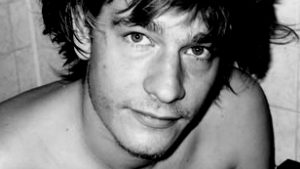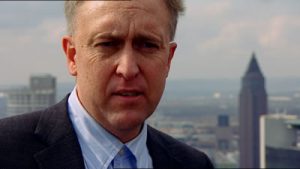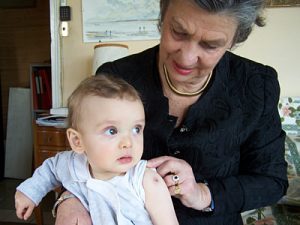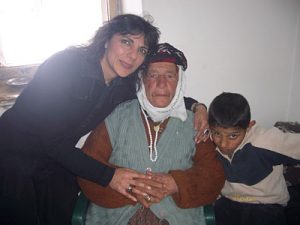Time period: 2011 - 2020

Three contributions by Florian Schneider for Quarks & Co. / WDR television
Editor WDR Claudia Heiss
First broadcast Oct. 22, 2019, WDR
Repeat Aug. 13, 2020, WDR
Available in the media library until Oct. 22, 2024.
Nobody likes to throw food away, and yet it happens: at home, in the supermarket and at the manufacturers. 18 million tons of food end up in the garbage can in Germany every year. Quarks goes on a search and asks why so much good food ends up in supermarket containers.

A film by Lin Sternal
Commissioned by 3Sat, "Ab 18!"
First broadcast: 06.11.2017, 23:40 Uhr
A young woman leaves her hometown in eastern Poland and moves to Germany.
Now she turns to an old friend back home with a letter to explain what the real reason of her move was...
The film tells the personal story of Ewa (25), a Polish woman who aborted her child 6 years ago and suffers from this painful experience until today. Even worse for her than the traumatic experience itself is the way society deals with this issue. Her childhood and adolescence were shaped by a catholic conservative environment, by which she is still influenced despite her attempt at emancipation. To this day, she has hardly told anyone about her decision at that time. Instead, she has turned her back on her homeland and tries to suppress what she experienced.
Editors: Nicole Baum, Udo Bremer (3Sat)

A film by Karin de Miguel-Wessendorf
Commissioned by WDR
First broadcast: November 10, 2016 at 10:40 pm on WDR television
The Rhenish lignite mining area is the largest source of CO² in Europe. Opencast mining devours entire villages, and also the Hambach Forest. Resistance is rising against this. Tree houses are being built in the forest, and around 30 tree squatters are trying to prevent the clearing of the valuable biotope. And the residents of the affected villages are by no means all leaving their homes without a fight - some are staying as long as they can. They are supported by a citizens' initiative in neighboring Buir, and by 1,000 climate activists from all over Europe who are occupying the Garzweiler open pit mine for a day and symbolically stopping lignite mining. They want to send a signal to the international climate summits: End the most climate-damaging way of energy production.
The energy company RWE wants to mine lignite until the year 2045, but is under increasing pressure since church groups and local politicians have also joined the resistance. Day 7 accompanied the climate fighters for a year. For example, Clumsy, who built himself a tree house 18 meters above the ground. He has been living at 18 meters for four years to prevent the excavators from advancing: "Just by living on the tree house, I am already in the way." Or Lars Zimmer, one of the last residents of Immerath. Most of the residents have already been relocated, but he doesn't want to leave his home: "If there was more resistance, RWE wouldn't find it quite so easy to raze these villages here to the ground." And Antje Grothus from Buir, a few kilometers from the Hambach open pit mine: "If we can't stop it, the excavators will be here on our doorstep."
Editorial: Andrea Ernst (WDR)

First broadcast: each Thursday, 17. + 24.11.16 at 23:25, WDR
Repetition on 30.07.17, 02:47, WDR
First part in the short version
"I'm going to be a farmer now! - Big dream, hard everyday life",
30 minutes: 10.08.17, 22:10, Day7, WDR
Second part in the short version
"Ackern für den Lebenstraum - Die neue Lust auf Landwirtschaft",
30 minutes: 17.08.17, 22:10 Uhr, Tag7, WDR
Short version "Geliebter Mist - Ackern für den Lebenstraum",
30 minutes: 13.08.17, 17:30, Gott und die Welt, ARD
Two films by Jessica Krauss & Insa Onken
A co-production with SCHNITTSTELLE KÖLN
Our series tells of people who want to get out of their virtual working world and back into a life that does not seem out of context.
In which you finish what you have started yourself, in which you bear responsibility and success is tangible in the truest sense of the word. In short: you want to become a farmer.
We tell of city dwellers who realize the romantic dream of country life.
Of career changers who are not satisfied with the learned profession and who want to start completely new as a farmer. And finally, from those who have grown up with sheep and pigs, but are now responsible for their own farm for the first time. Of people who set out to dare the great adventure: a new life.
As different as the biographies of the new beginners are, they are united by their attitude to life. They want to live it consciously, be mindful and farm sustainably.
Of course, that's easier said than done. Whoever becomes a farmer today needs a thick skin and good nerves. A lot of work, little free time, low social
status, high financial risk and dependence on factors that cannot be controlled: Weather, nature, animals - and not to forget the European bureaucracy and King Customer, who is becoming increasingly demanding but at the same time not more generous.
And so the new farmers all face the ethical challenge of wanting to produce considerately to people and nature on the one hand, but on the other hand, under the price pressure of the market, often being forced to do things that run counter to this maxim.
A dream job looks different, doesn't it?
Editing: Angelika Wagner (WDR)

A film by Karin de Miguel-Wessendorf and Valentin Thurn
First broadcast: 03.11. 2014, 20:15 clock, WDR
Repetition: 16.05.2015, RBB; 21.07.2015,
Phönix; 06.06.2015,17:00 clock; 07.06.2015,
10:15 clock and 08.06.2015 at 5:00 clock, HR
The milk in the supermarket is getting cheaper. For dairy farmers, this means: grow or weaken! In the last decade, a third of German dairy farmers have had to give up - at the same time, the number of mega farms has increased. Hundreds of cows stand close together in XXL barns. To ensure that they perform at their best, the animals no longer come out to pasture, even in summer.
Dairies are also getting bigger and bigger: multinationals like Arla or Friesland-Campina have taken over the small regional dairies and export milk as far away as China. But they too are dependent on the price dictates of supermarkets, primarily Aldi or Lidl. "Consumers are not honest with themselves," criticizes a farmer from Kleve on the Lower Rhine. "They tell us they are willing to spend more on organic and regional food, but then we meet them all at the checkout at ALDI." He believes the death of farmers is inevitable, and that only large farms are competitive: "We won't get anywhere with the romantic agriculture we had 20, 30 years ago. The harsh reality is that only those who have their costs under control will survive."
But some small dairy farmers are daring to rebel against the wave of concentration on the milk market: they are relying on direct marketing at better prices. For example, a farmer from the Soest district who, together with others, has founded a farmer's dairy to break away from the price dictates of the giants.
Or a young farmer's wife from the Siegerland region: "Even during our training, we are told that we should invest in larger stables. But I would like to see family farming, where every animal is not just a number." In March 2015, the last protection for small farmers will fall: with the EU-wide end of the milk quota. When the milk market is liberalized, many fear a new drop in prices. It's a David versus Goliath battle, because they don't need to hope for support from the farmers' association and the German government. They have long since decided that modern agriculture can only function in large-scale structures.
Editors: Angelika Wagner, Andrea Ernst

A co-production with SCHNITTSTELLE KÖLN
First broadcast: 13.05.2013, 22:45, ARD
Repetition: 14.06.2015, 16:15, WDR and 20.06.2015, 09:30, WDR
More than half of all food ends up in the trash! With this result, the documentary "Taste the Waste" (2011) shocked and triggered a heated public debate. Since then, big plans have been made. By 2020, Federal Minister of Food Ilse Aigner wants to ensure that only half as much food is thrown away in Germany as today. But so far there have been few concrete political steps. Why do legislators in Germany, unlike other European governments, only make rather non-binding appeals to the public?
"Unfortunately, throwing away is all too often worthwhile for companies because food is so cheap and labor is so expensive," says nutrition expert Prof. Guido Ritter of Münster University of Applied Sciences.
Why is that? Valentin Thurn looks into the matter and searches for solutions throughout Europe. In the process, he meets many people who no longer want to wait for politicians to act on this important issue for the future. For example, the Kotzur family from Ludwigsburg, who want to find out how much they can reduce their food waste with a waste diary. "This has only made us really aware of what we throw in the trash can every day!"
Companies in Holland, England, Denmark, Germany and Ukraine are also looking for solutions: A carrot juice factory also uses the small carrots that were previously sorted out, clever designers recycle originally grown vegetables under the label "Culinary Misfits" that the trade does not accept in this way, individual supermarkets no longer make junk offers that tempt customers to buy more than they need. Farmers and chefs produce and manufacture according to the maxim: "Feed the clients, not the bins!" - "Feed the customers, not the garbage cans!". But is the good will of individuals enough?
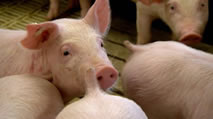
A film by Frank Bowinkelmann and Valentin Thurn
Produced for ARTE and NDR
First broadcast: 09.01.2014, 21:45, ARTE
Repetition:
20.02.2015, 21.45, ARTE
02.11.2019, 22.40, ARTE
A short version of the topic, "Antibiotics in animal husbandry", magazine feature for "W wie Wissen", was broadcast on 12. 05.2013 broadcast
"We must have the possibility to resort to antibiotics when animals actually get sick or flu comes into the group." This is an argument you hear over and over again from farmers when you ask them why so many antibiotics are used in animal fattening. Over 1700 tons per year are used in Germany alone - almost seven times as much as in hospitals. In France, the use of antibiotics is even twice as high, per kilo of meat produced. The result: dangerous resistant germs are forming in animal stables. Two pathogens in particular are found more and more frequently on our food: so-called MRSA and ESBL-forming germs. Both pathogens are multi-resistant, which means that many antibiotics are ineffective against them. They pose a danger not only to farmers who have direct contact with the germs in the barn. Scientists have found the bacteria on meat - and even on vegetables. How do the germs get there? What happens when we ingest them with our food? Frank Bowinkelmann and Valentin Thurn want to answer these questions. Scientists, farmers, veterinarians and human doctors in Germany, Denmark and the Netherlands have their say.

A Fim by Karin de Miguel Wessendorf
Commissioned by ZDF and ARTE
First broadcast: 01.10.2013 at 20.15, ARTE
No prosperity without growth. This has been the credo of business and politics up to now. Steady economic growth is seen as a guarantee for jobs and for the quality of life of the population. Anyone who doubts the growth dogma is ridiculed as being out of touch with reality.
But the economic crisis and climate change have shaken this belief. Population explosion, energy crisis and environmental pollution are problems that can no longer be suppressed. If all people on earth lived as the Germans do, we would already need the resources of three planets. More and more people are convinced: unlimited growth is not possible in a world of limited resources.
Despite an increase in gross domestic product, personal life satisfaction in the industrialized countries has not grown since the 1970s. Could it be that our consumer society is failing to deliver on the promise of happiness? What do we really need to live a good life?
We join the author as she explores the question: "What do I need to change to make my lifestyle sustainable? And what can I do without losing quality of life?" Karin de Miguel Wessendorf embarks on a journey through Europe. She visits people, initiatives and companies that have recognized that economic growth cannot be the measure of all things.
The demographic change, the limited resources of the planet and the current economic crises provide a brake on growth anyway, whether we want it or not. High time to rethink and to steer the exit from the destructive growth itself. A movement has emerged that is looking for alternatives. Instead of falling into the role of victim, entrepreneurs, politicians, scientists and activists are working in theory and practice to build a "post-growth society" - a society in which a better life for people and the environment should be possible in the long term.
On her journey, the author finds that the search for a sustainable lifestyle does not necessarily mean doing without, in many cases it is even a gain in quality of life.
Detailed background information and the opportunity to actively participate in the discussion can be found on the Facebook page for the film.


